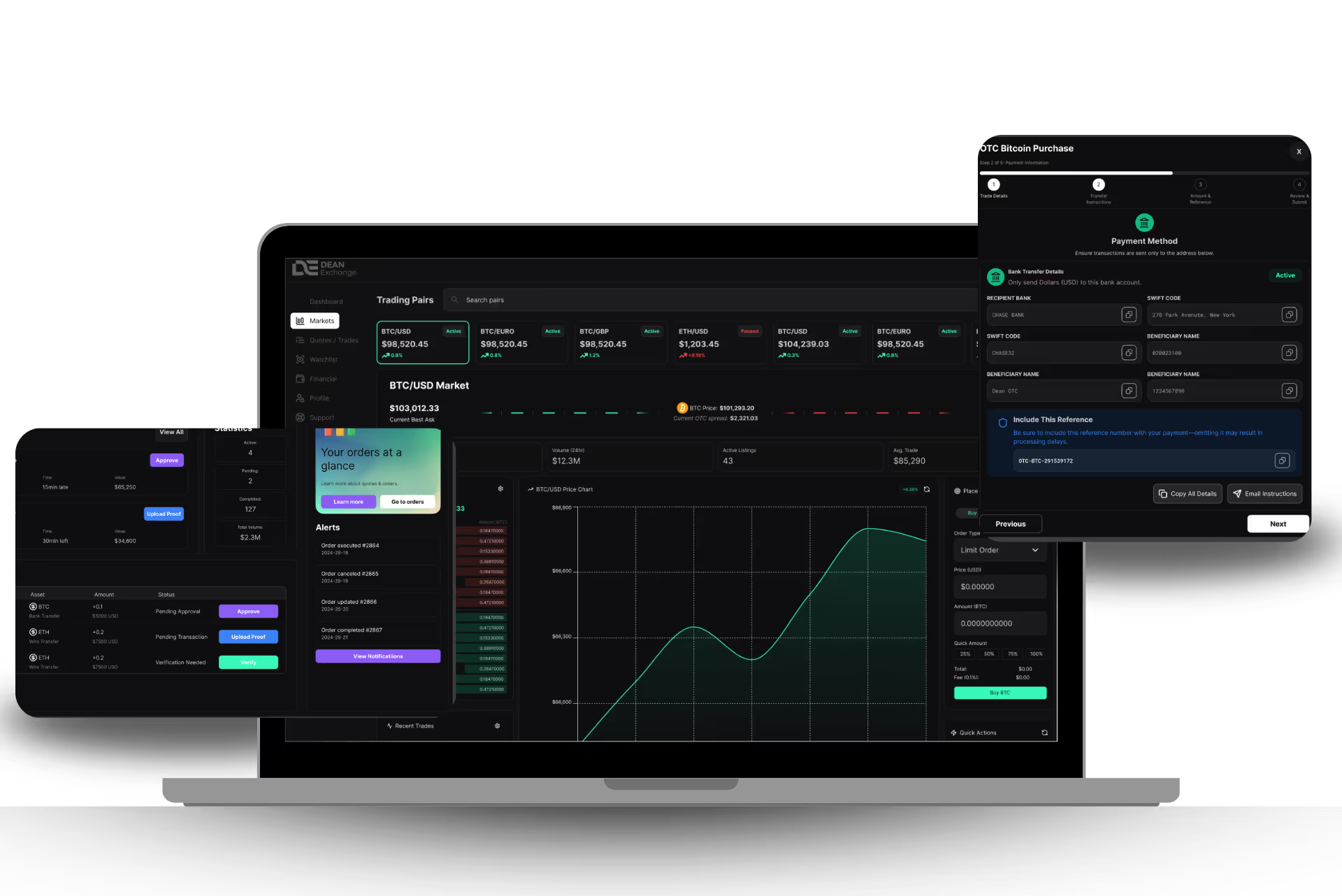By the
This is some text inside of a div block.
This is some text inside of a div block.
•
5
min read

The internet is evolving. What began as static web pages (Web1) progressed to interactive platforms and social media (Web2). Now, we’re entering Web3—a decentralized, user-empowered internet where blockchain technology plays a central role. For newcomers, this can seem overwhelming, but understanding how blockchain powers Web3 is crucial for navigating the next digital revolution.
In this beginner-friendly guide, we’ll explore what blockchain is, how it enables Web3, and where it’s already making a real impact. Dean Exchange is here to help you make sense of it all with actionable insights, cryptocurrency tutorials, and live blockchain sessions tailored for every learning level.
At its core, blockchain technology is a digital ledger—a record-keeping system that stores data in “blocks” linked together chronologically. Once data is written to a block, it becomes nearly impossible to alter without the agreement of the entire network. This creates transparency, security, and immutability without relying on a central authority.
Unlike traditional databases that are controlled by institutions or corporations, blockchains are decentralized. This means no single entity controls the data or system—making it ideal for powering peer-to-peer applications and services in Web3.
Web3 is a term used to describe the next generation of the internet, built on open protocols and decentralized systems. It shifts power from centralized platforms (like Facebook or Google) to users, developers, and communities. The idea is to return data ownership and digital identity to individuals.
Blockchain is the foundation that makes this possible.
One of the key principles of Web3 is decentralization. Blockchain enables this by distributing control across a network of computers (or nodes). Instead of trusting a central party to manage data, Web3 applications use smart contracts—automated agreements on the blockchain—to enforce rules transparently.
Use Case:
Decentralized Autonomous Organizations (DAOs) are run entirely on smart contracts. Token holders vote on proposals, and changes are executed automatically without human interference. This governance model is only possible because of blockchain.
In Web3, users can truly own digital assets thanks to tokenization. Whether it's cryptocurrency, artwork, or access credentials, tokens prove ownership on-chain and allow seamless transfer or trade.
Example:
A music artist can mint a song as an NFT on the blockchain. Fans can buy it, trade it, or access exclusive content without relying on Spotify or a record label.
This model is already gaining traction in art, gaming, and content creation—and is a major reason why cryptocurrency exchanges and decentralized exchanges are seeing increased traffic.
Web3 eliminates the need for banks by using blockchain to create decentralized finance (DeFi) systems. These systems allow lending, borrowing, trading, and earning interest—directly from a wallet.
How It Works:
Instead of applying for a loan from a bank, a user can deposit crypto into a DeFi protocol and borrow against it instantly. The entire process is handled by smart contracts—secure, automatic, and open to anyone.
Blockchain’s transparency ensures that users can audit the process at any time. No intermediaries, no gatekeepers.
dApps are blockchain-powered versions of common apps—such as social networks, games, or file storage platforms—that don’t rely on centralized servers.
Examples:
All these applications are built on blockchains, using smart contracts and tokens to deliver services without centralized control.
Blockchain also enables self-sovereign identity—a model where users control their digital identity, credentials, and data access rights.
Real-World Use Case:
Instead of logging into a site with Google or Facebook, a Web3 user signs in with a crypto wallet. Their identity is verified on the blockchain, and they retain full control over their data.
This approach helps combat privacy issues, data leaks, and centralized censorship.
While theory is important, hands-on experience is essential in Web3. That’s why Dean Exchange offers live blockchain sessions—interactive workshops and events that guide you through setting up wallets, using decentralized apps, or trading on a decentralized exchange.
These sessions are ideal for beginners and intermediate users who want to go beyond reading and start interacting with blockchain in real time.
Dean Exchange isn’t just another news platform. We’re your educational partner in Web3. Our offerings include:
Whether you’re trying to understand what blockchain is or want to explore DAOs and DeFi protocols, Dean Exchange offers clear, expert-led resources without the hype.
Web3 is more than a trend—it’s a paradigm shift. As platforms like Ethereum, Polkadot, and Solana continue to scale, the underlying infrastructure of the internet is being reimagined.
Blockchain technology enables a more secure, open, and user-centric digital world. But adoption depends on accessibility. That's why education, community, and hands-on experience are essential.
The future of the internet is decentralized, and blockchain is what makes it possible. Understanding this connection is the first step in participating meaningfully in the Web3 economy. From DAOs and DeFi to digital identity and tokenized assets, blockchain is powering the tools and systems that are redefining how we interact online.


Join our newsletter for exclusive insights, breaking crypto trends, and learning opportunities—delivered straight to your inbox.